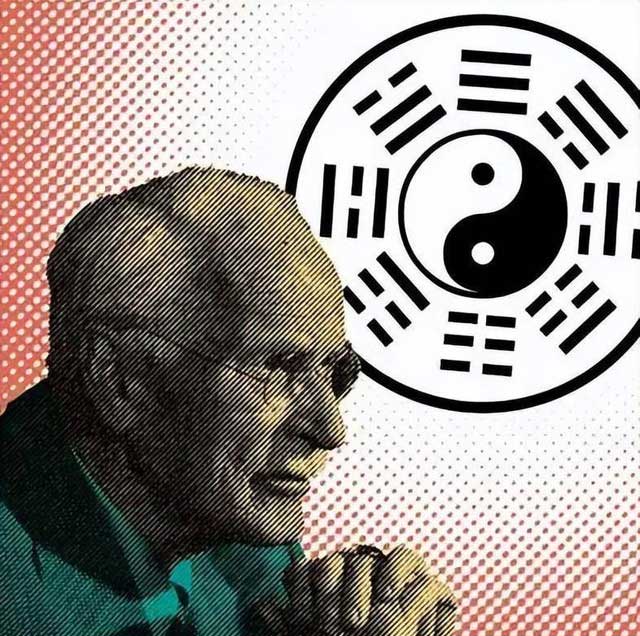Throughout human history, there have been individuals who astonish us with their extraordinary intellect and incredible experiences. One such individual is Carl Jung – the renowned psychologist, who is considered a symbol of modern psychology, yet is also a mysterious figure with experiences that transcend conventional science.
Carl Jung was born in Switzerland in 1875, into a family of pastors. From a young age, he lived in an environment rich in religious influence. Although his childhood was not entirely peaceful, his desire for knowledge and exploration of issues related to the human mind began when Jung read The Psychopathology of Everyday Life by Kraft-Ebing.
In 1910, Jung began working at a psychiatric hospital in Switzerland and officially entered the field of psychology. This was also the time when he met Sigmund Freud – who is regarded as the father of psychoanalysis. The collaboration between these two scientists later produced classic works such as The Theory of Psychoanalysis and Studies in the Psychology of the Unconscious.

Psychologist Carl Jung (1875-1961).
However, differences in perspective and philosophy led to a rift between Jung and Freud just six years after their collaboration. While Freud focused on the role of the unconscious and desire, Jung expanded his research to include mystical and spiritual elements. From this, he developed analytical psychology – an important foundation for modern psychological research.
Carl Jung delved into the depths of the human soul, exploring unconscious aspects that had previously received little attention. Concepts such as the collective unconscious, archetypes, and synchronicity opened a new dimension in understanding oneself and the world.
Not only was he an outstanding scientist, Carl Jung was also seen as a “prophet” with mystical experiences. From an early age, Jung believed in the existence of supernatural forces and claimed to have the ability to connect with them.
Throughout his life, he experienced many inexplicable events. One of these occurred while he was treating a psychiatric patient – he suddenly felt as if the patient’s soul was saying goodbye. Shortly after, the patient committed suicide, and the bullet that caused death coincided with the location Jung felt in his hallucination.
But it did not stop there; Jung continuously dreamed of floods, corpses, and rivers of blood. These dreams seemed to foreshadow World War I, during which chaos and death engulfed Europe.

Carl Jung is also seen as a ‘prophet’ with mystical experiences.
Carl Jung combined psychology with mythology, religion, and philosophy, creating a complex and multidimensional system of thought. This made his works both scientific and philosophical as well as spiritual.
One of Jung’s most notable experiences was when he underwent a near-death experience. Towards the end of his life, he had an accident that broke his leg and suffered a severe heart attack. In a semi-conscious state, he recounted feeling his body floating in space.
Jung reported seeing Earth from above, recognizing familiar geographical features such as Sri Lanka, the Arabian Peninsula, and the Mediterranean Sea. Then, his gaze focused on a strange meteorite. This meteorite appeared to be hollow in the middle, and inside was a mysterious temple.
In this strange dream, Jung felt as if his spirit, soul, and memories were stripped from his body. Despite the painful experience, he also felt a profound serenity, something he had never experienced in real life.

One of Jung’s most notable experiences was when he underwent a near-death experience.
Carl Jung is the founder of analytical psychology, a branch of depth psychology. He believed that besides personal unconsciousness, humans also possess a collective unconscious that contains the shared memories and experiences of humanity. He also introduced the concept of archetypes, psychological patterns that exist within the collective unconscious and influence our thoughts and behaviors.
In fact, many believe Carl Jung embodies the harmony between science and faith. While he utilized scientific thinking to explore the mysteries of the human mind, he was also unafraid to seek answers beyond the explanatory reach of science.
He argued that science and faith do not contradict but rather complement each other. According to Jung, science helps us understand the material world, while faith provides comfort and spiritual guidance. Together, these two elements form the foundation of human civilization.
His theories extend beyond the laboratory or psychiatric hospitals and have become foundational in modern psychological research – concepts such as archetypes, the collective unconscious, and the self.
Jung also had a profound influence on art, literature, and religion. He inspired subsequent generations to explore the nature of humanity and the connection between psychology, culture, and spirituality.
Carl Jung is not only a scientist but also a symbol of humanity’s relentless quest to understand itself. His life exemplifies that science and faith can coexist, guiding us towards new and profound discoveries about the world and the soul.


















































